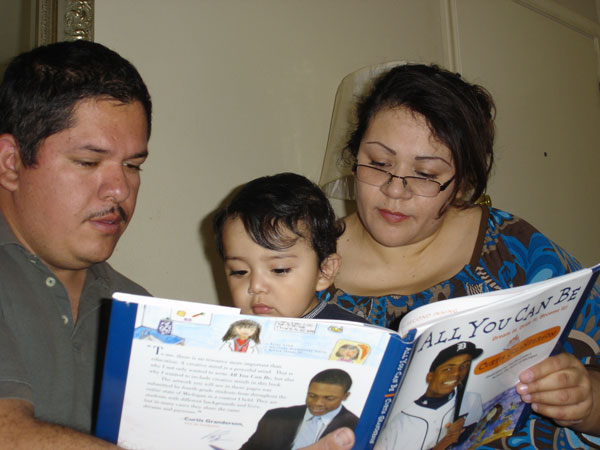
Approach: Carola uses a criterion-referenced instruction progression, specific to the student’s needs and strengths.
Diagnosis is based on testing provided by the child’s school, an educational therapist, or child psychologist as well as Carola’s Informal Reading Inventory which includes screening for vision development. Both are administered free of charge during the initial visit, in the student’s home. Subsequent instruction takes place at Carola’s home.
Comprehension continuum: (as appropriate to reading level) Students become self reliant in reading, researching information, and forming opinions as they progress through this continuum:
Carola works with students who are having difficulty reading on Grade Level, or are below grade level. Ideally, she works with them twice weekly for one hour per session, with a minimum of 45 minutes of instructional time per one hour session, sliding scale available.
When do four-year-olds benefit from reading readiness instruction?
Very rarely, preschool teachers make referrals to reading specialists. Early intervention provides exposure to language and readiness tasks, exposure a child may have missed, for whatever unique reasons, during their first four to six years of life.These early years are critical for language acquisition, and in turn, learning to read.
Before a child can read, the child needs to understand that alphabet letters are symbols for sounds. They cannot read unless they possess a strong understanding of conversational English and readiness skills.
Carola works with preschoolers who have legitimate readiness needs as observed by an educational therapist or preschool teacher.
No program ‘cures’ dyslexia. People who are dyslexic will, most likely, always exhibit some traits. However, decoding skills and comprehension skills can be maximized with training.
Some people with neurological disorders or compromised executive thinking skills exhibit limited capacity for short term memory of words or ideas. Assessments can span two or three sessions so that memory and cognitive functioning can be measured in real time. For example, when a student is unable to recall strategies and sight vocabulary from the prior lesson, reading instruction may not yet be appropriate.
Sometimes, after working with a student for a few sessions, learning differences appear, requiring the expertise of a specialist in neurology, special education, kinestheology, or visual perception. Sometimes reading instruction needs to wait until these other challenges are addressed./

Adults are the fastest learners. They already have pieces of the puzzle.
They need someone to show them how to fit all the pieces together.
Undiagnosed visual development issues are often the main reason why some adults are illiterate. Carola screens adult students for vision development.When you read, do you find yourself thinking about other things? When reading rate is increased, the mind gives more attention to reading. Comprehension improves.
Although sixth grade is the time to develop faster reading, most readers are not taught to read at their optimal rate. Speed reading is about breaking a habit; replacing the old rate with a new one, by applying new strategies for improving efficiency.

Before beginning speed reading, a vision screening and reading pretest are administered to determine the student’s visual readiness, reading level, word-per-minute rate and comprehension. There is no charge for the screening and pretest./p>
The number of sessions and duration of each session is determined by the student’s learning style and commitment to reading between sessions: old habits need to be broken, and practice makes perfect! Students typically need as few as two hours of instruction to learn the basics, and continue with up to ten sessions to integrate new skills and habits.